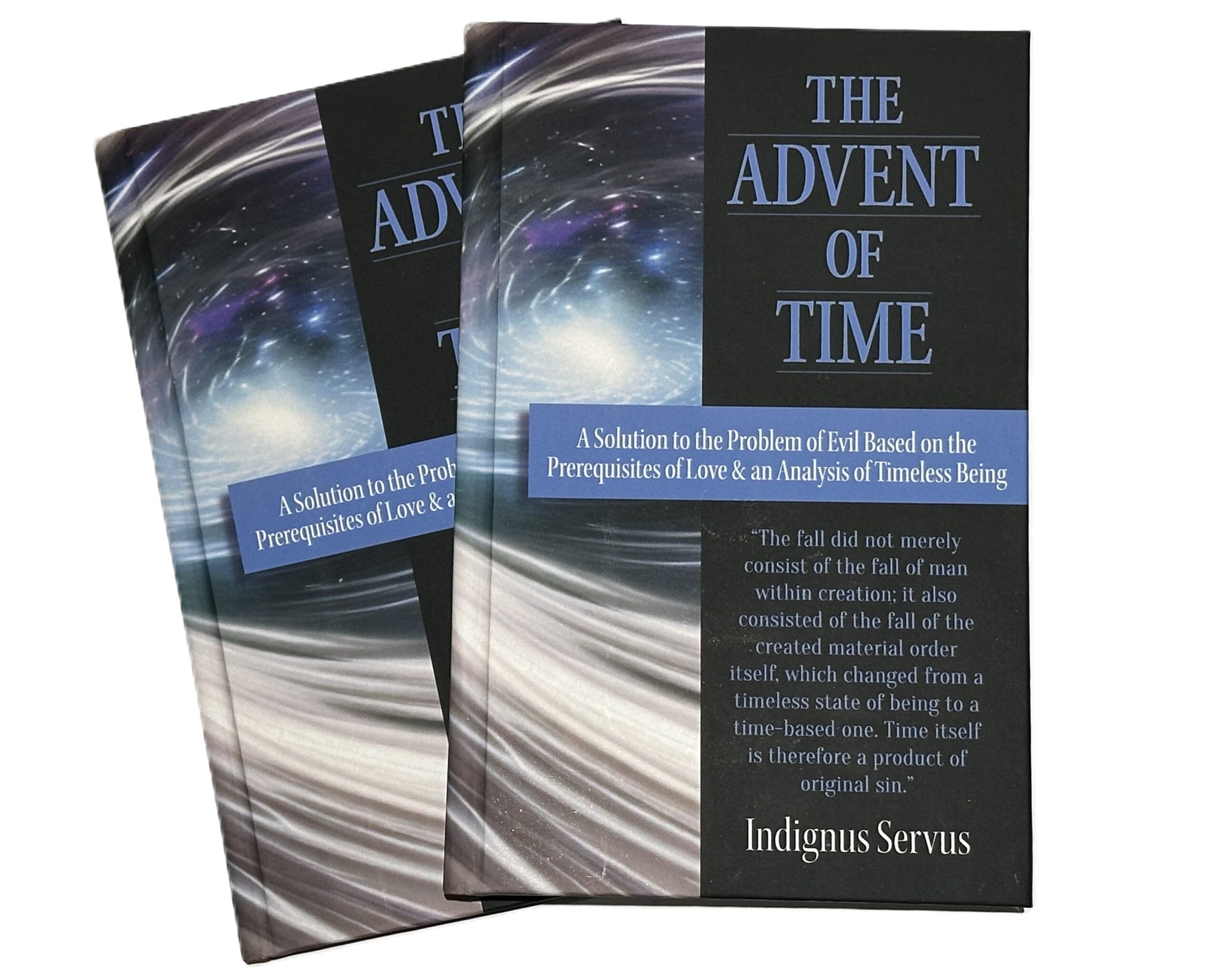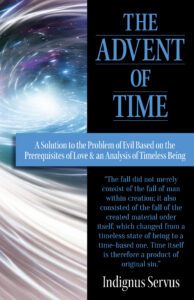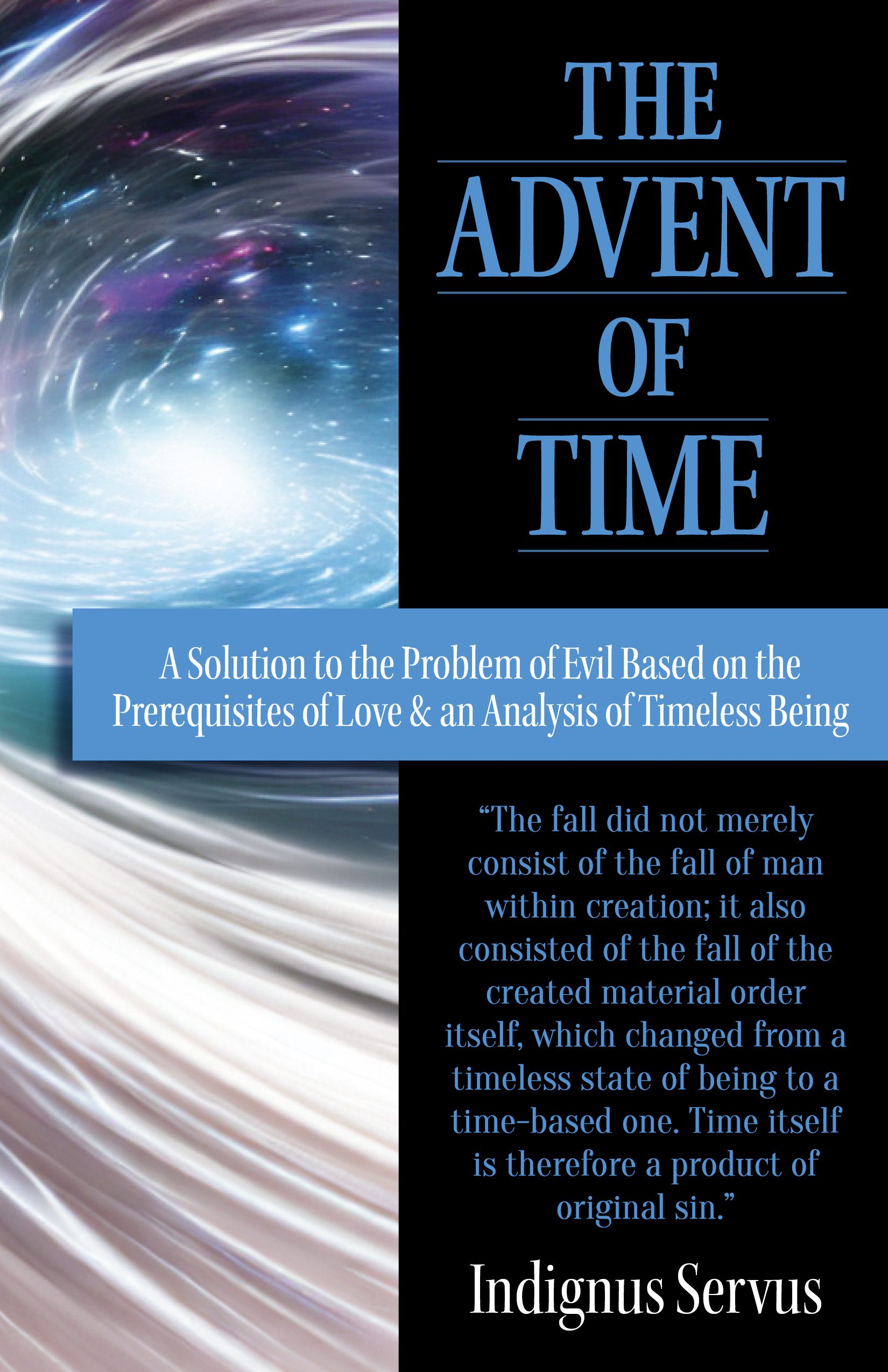Reconciling Natural Science and Direct Creation
Man’s Fall from the Eternal to the Temporal
If a perfectly loving God created man directly,
as asserted in Genesis, how does one reconcile this with evidence from the
geologic record indicating that man was gradually created through
the mercilessly indifferent process of evolution? Do the findings of other
fields of natural science conflict with Genesis?

Because we experience our present existence locked within linear time, it is easy to assume that time governs every conceivable aspect of existence. Said another way, when we imagine timeless existence, we tend to conceive of it as time marching indefinitely into the future, with timeless beings forever confined inside of time, moving forward along with the flow of time, hour by hour, day by day. But such a conception of ‘timeless being’ relies on our present existence—which is finite and temporal—to define the nature of an existence that is experienced above time itself.
Man’s tendency to envision all of conceivable reality through the myopic lens of his own current temporal existence is part of what makes Genesis such an exceptionally difficult narrative for fallen humanity to understand. If the opening pages of the Bible are describing events that took place in a setting that is completely outside of the construct of linear time, then it is impossible to accurately describe the original state of the first humans’ existence using our time-based conception of physical reality.
Based on the description of the original creation in Genesis 2—a creation in which death did not exist—it is reasonable to conclude that an existence outside of the construct of linear time is precisely what Adam and Eve experienced. After all, if death did not exist in the original state, then the first humans would have had no endpoint by which to measure their own lives. If they could not conceptualize an end to their existence, it is doubtful that they were able to conceive of any time-based measure of anything.
Just as the first humans’ experience of timelessness did not equip them to comprehend the nature of a finite, temporal existence, the time-based conceptual foundation that fallen man relies upon to understand nearly every aspect of our existence is rendered useless when we attempt to comprehend the nature of the first humans’ existence prior to the Fall. Even our understanding of the nature and operation of the physical universe ceases to be a reliable guide for understanding the operation of matter in the original creation because present-day spacetime is itself governed by time-based rules of physics. Simply put, Genesis is describing a realm of existence that is different than the one we inhabit at the most elemental, structural level of being.
In order to more fully appreciate how monumentally at odds mankind’s current experience of time and being is from the state of being experienced by the first humans, careful consideration must be given to what a timeless loving relationship with God would be like. Because God “inhabits eternity” according to Isaiah 57:15, and because the account in Genesis 1—3 takes place in an environment in which God is directly present, Genesis 1—3 requires readers to think beyond every time-based category through which and within which mankind currently experiences life. Only then can the first humans’ experience of communion with God in a state of transcendent, timeless being be understood in the proper context.
Genesis 3 states that this relationship with God was ruptured through a choice that was freely made by the first humans, wherein they prioritized the acquisition of a lesser end (knowledge of good and evil) over their loving relationship with God. Because the relationship that was ruptured was one that occurred in a supra-temporal state of being, the effects of this rupture likewise superseded time. Specifically, everything that God placed under man’s authority transformed from what was once a selfless, transcendent state of being—superseding time—into a selfish state of being that is finite and linear, where physical death can occur.
When Genesis 1:26—27 declares that man was made in God’s “likeness” for the purpose of enabling them to “rule over” all of the creatures in the domain given to them by God, it would be foolish to assume that these two assertions are meant to convey a form of rule like that exercised by a modern-day zookeeper over the animals in his charge. The “rule” referenced in Genesis is instead one of divine scope; it is a form of rule that includes the godlike power to reorder the very basis of all life placed under man’s sovereignty.
Since man is the sovereign ruler of his domain, and since man was made in the “likeness” of the timeless, omnipotent God (for the sake of enabling them to experience timeless love with God), the changes wrought by Adam and Eve were holistic in nature and scope: every form of life within their realm, at all points in linear time, became a mirror of their willful self-centeredness and deliberate moral indifference towards God at the moment of their fall. As evolution makes readily apparent, when every form of life engages in self-furthering action while remaining indifferent or otherwise blind to the effects of such self-centeredness on other forms of life, universal suffering and death are the inevitable result.
Made in the “likeness” of the timeless, omnipotent God, the changes wrought by Adam and Eve are holistic in nature and scope, causing every aspect of their realm—at all points in finite space and linear time—to mirror their willful self-centeredness and deliberate indifference towards God at the moment of their fall. As evolution makes readily apparent, when every form of life engages in self-furthering action while remaining indifferent or otherwise blind to the effects of such self-centeredness on other forms of life, universal suffering and death are the inevitable result.
At the moment of their fall, Adam and Eve not only reordered the nature of all life placed under their rule, they also reordered the basis of the material realm itself. This point is clearly made in Genesis 3:17 when, following Adam’s original sin, God said to him, “Cursed is the ground because of you” (NIV). The “ground” refers to the matter out of which the world is made. It consists of the chemical elements listed in the periodic table, and it adheres to the same laws of physics that govern the operation of matter everywhere in the universe. The fact that the universe contains an enormous amount of “ground” in it does not conflict with the assertion that unfallen man, who was made in the “likeness” of almighty God, possessed the capacity to alter the manner in which all of this material operates.
Genesis not only teaches that man was made with power to reorder the foundation of the material realm that he inhabits, it further instructs that man was made with power to reorder his own creation, down to the most elemental aspects of his own being. According to Genesis 2:7, man was formed “from the dust of the ground” (NIV). Genesis 3:17 declares that man altered the operation of this same “ground” through his decision-making. Together, these two verses communicate that man’s power in his original state was so prodigious that he was able to change the structural basis of his own being, a truly godlike act because it constituted a literal reordering of his own creation.
With this reordering of his own creation because of sin, Genesis 2:17 states that man became subject to death. Timeless beings cannot die, for the simple reason that there is no endpoint to timelessness. This means Adam and Eve would have had to undergo a change from a transcendent, timeless state of existence to a finite, temporal one. A finite, temporal existence requires the birth of spacetime itself. Such an existence requires, in other words, the birth of the time-based universe as we know and experience it. Genesis is therefore asserting that the restructuring of the material order around time-based rules of physics is an event that occurred after the creation of man; it is asserting that time itself is a consequence of original sin.
The fall from a timeless state of existence to a time-based state of existence necessitated, furthermore, that Adam and Eve enter into temporality at some specific point in the history of linear time. Because supra-temporal beings exist entirely outside of the construct of linear time, there is no reason why the first humans’ point of entry into temporal existence needed to occur at the outset of linear time.
On the contrary, if the first humans’ reordering of their own creation and realm of sovereignty followed the same basic sequence established by God when he created the material realm and all of the creatures that inhabit it, then fallen man’s arrival into temporal existence would occur near the end of linear history; it would constitute the final key development in a realm now ordered at every level, and at every physical and historical point in spacetime, around the twin pillars of selfishness and indifference to others. Put differently, the sequence of key creative events in the fallen temporal realm is a profoundly corrupted replication of the same set of creative events in the original, timeless pre-fallen realm.
The idea that Adam and Eve reordered the entire universe in such a manner may seem outrageous, but if it is true that man was actually made in the “likeness” of God, then there is nothing illogical about the assertion that the first humans changed all of physical creation from a timeless state of being to a temporal state of being through a single act of their will. Certainly, an omnipotent God could reorder all of physical creation through a single act of his will. If this is the case, then it is only sensible to conclude that timeless beings who have been made in the “likeness” of God can do the same.
In fact, this is exactly what a plain reading of Genesis 1—3 asserts. It is only when readers change the plain, ordinary meaning of the words “likeness” and “ground” that they are able to conclude that man’s original sin was not sufficiently consequential to reorder all of physical creation, changing it from a timeless state of being to a time-based one.
When time itself is understood as a product of the Fall, the established scientific findings of astronomy, physics, geology, and even evolutionary biology cease to conflict with the biblical creation narrative.

